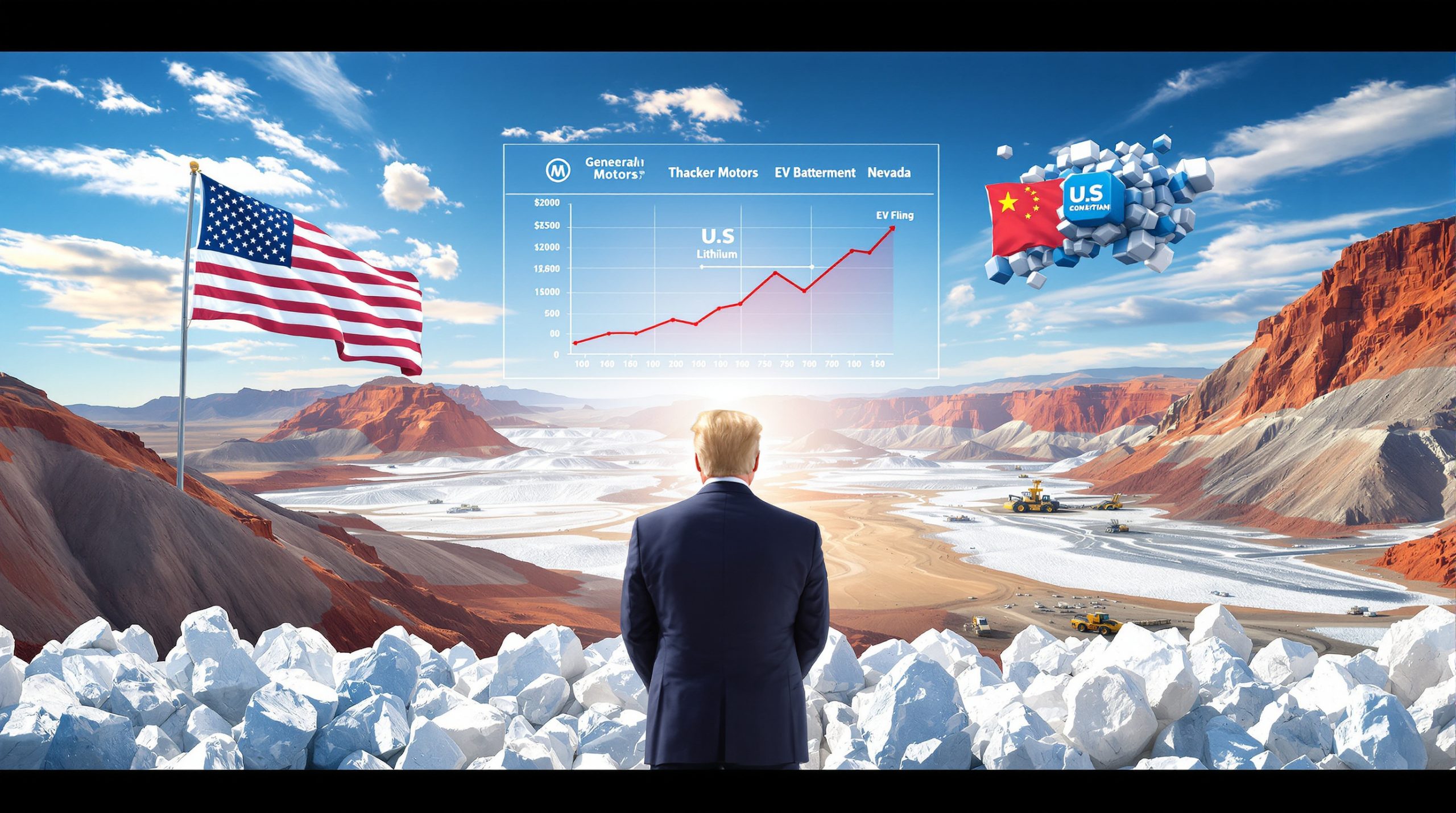The Unexpected Budget Turnaround: Iron Ore's Critical Role
The Australian Federal Government recently announced a significantly lower budget deficit than originally forecast, with the difference largely attributed to unexpectedly resilient iron ore prices. Instead of falling to the predicted US$60 per tonne, iron ore has maintained strength at approximately US$105 per tonne, creating a substantial positive impact on government revenue streams.
This price resilience has contributed to a budget deficit of just $10 billion—considerably below the $27.6 billion projected in the pre-election March Budget, representing a $17 billion improvement in fiscal outcomes.
The Treasury's announcement reflects how commodity prices directly impact Australia's economic health, with iron ore price trends emerging as a key contributor to this financial turnaround. As reported by the Australian Bureau of Statistics, resource exports remain a cornerstone of Australia's economy, with iron ore leading the charge.
What's Driving Current Iron Ore Price Strength?
China's Manufacturing Resilience
Despite global economic headwinds, China's manufacturing sector has demonstrated remarkable resilience, maintaining strong demand for Australian iron ore. This continued strength comes despite market downturns and international trade tensions.
The relationship between China's industrial output and iron ore demand remains strong, with Australia's proximity to Asian markets providing a significant competitive advantage over other global suppliers. China's infrastructure projects and construction sector continue to drive demand despite attempts to moderate growth in certain sectors.
Price Performance Metrics
The iron ore market has shown impressive stability and growth:
- Current price: Approximately US$105 per tonne
- Recent monthly increase: US$3 per tonne
- Recovery from recent low: US$11 per tonne (from US$94)
- Year-to-date performance: 1.68% increase
These figures reflect the market's ability to withstand short-term fluctuations while maintaining an upward trajectory. Analysts note that price movements often correlate with announcements from China regarding infrastructure spending and environmental policies affecting steel production.
Global Market Position
Australia maintains its position as the world's largest iron ore exporter and second-largest producer, accounting for approximately one-third of global production. According to the Department of Industry, Science and Resources, Australia's iron ore exports reached record values, cementing its dominance in global markets.
This dominant market position amplifies the impact of price movements on national economic outcomes, creating a multiplier effect throughout the Australian economy. The Pilbara region of Western Australia remains the epicenter of production, with its high-grade deposits offering quality advantages over many international competitors.
How Do Iron Ore Prices Impact Federal Budget Outcomes?
The Revenue Mechanism
Iron ore price movements directly affect government revenue through multiple channels:
- Company tax revenue: Higher iron ore prices increase mining company profits, generating additional corporate tax payments
- Royalty payments: Resource extraction payments increase proportionally with commodity prices
- Employment effects: Stronger mining sector activity supports jobs and personal income tax revenue
- Secondary economic benefits: Mining industry purchases flow through to other sectors
This multi-layered revenue impact creates a significant fiscal multiplier effect. When iron ore prices exceed Treasury forecasts, the positive impact ripples through multiple revenue streams.
Quantifying the Budget Impact
The improvement in the budget position—from a projected $27.6 billion deficit to an actual $10 billion deficit—demonstrates the substantial fiscal impact of stronger-than-expected commodity prices.
This $17 billion turnaround represents one of the most significant positive budget improvements in a single parliamentary term. The scale of this improvement highlights both the importance of iron ore to Australia's fiscal health and the challenges of accurate budget forecasting in a commodity-dependent economy.
Financial analysts note that each US$10 movement in iron ore prices can shift budget outcomes by billions of dollars. This sensitivity creates both opportunities and risks for fiscal planning.
Political Dimensions of the Budget Improvement
Government Messaging
The Treasurer has positioned the improved budget outcome as evidence of "responsible economic management," highlighting the government's fiscal achievements:
- Converting previous deficits into surpluses in their first two years
- Significantly reducing the deficit in their third year
- Achieving "the biggest ever positive improvement in the Budget in a single parliamentary term"
This messaging strategy emphasizes policy effectiveness while downplaying external factors like commodity price movements. Political commentators note that governments typically claim credit for positive economic outcomes regardless of their actual policy contribution.
Economic Context Considerations
While the government has emphasized its economic management credentials, the substantial contribution of strong iron ore prices and budget boost to the improvement represents an external factor beyond direct policy control.
Economic analysts point out that commodity price windfalls create temporary budget improvements that can mask underlying structural issues in the economy. The challenge for policymakers lies in leveraging these temporary gains to strengthen long-term fiscal sustainability through strategic investments or debt reduction.
Budget experts recommend transparency about the sources of fiscal improvements to ensure realistic public expectations about future economic performance.
Future Outlook for Iron Ore Markets and Budget Implications
Market Factors to Watch
Several factors will influence future iron ore prices and their budget impact:
- Chinese construction trends: Changes in urban development policies and property market regulations
- Steel production technology: Shifts toward electric arc furnaces could reduce demand for traditional iron ore
- Global competition: Increased production from Brazil and emerging suppliers
- Climate policy impacts: Carbon pricing and emissions regulations affecting traditional steelmaking
- Infrastructure stimulus: Government spending programs affecting steel demand
Resource economists suggest that while short-term price strength may continue, long-term structural factors point toward potential price decline as global supply adjusts and steel production technologies evolve.
Budget Planning Considerations
The volatility of commodity prices presents ongoing challenges for budget forecasting:
- Conservative price assumptions: Lower forecast prices create potential for positive budget surprises
- Revenue diversification: Reducing reliance on resource revenues improves fiscal stability
- Sovereign wealth mechanisms: Better management of windfall gains for long-term benefit
- Structural reform needs: Addressing fundamental economic challenges regardless of commodity cycles
Budget experts recommend establishing fiscal rules that segregate windfall commodity revenues for strategic purposes rather than incorporating them into ongoing operational spending. As highlighted by financial experts, prudent planning for potential future price decreases remains essential for sustained fiscal health.
Iron Ore's Strategic Importance to Australia's Economy
Economic Contribution Metrics
Iron ore remains a cornerstone of Australia's economic strength:
- Export earnings: Contributed over $100 billion to Australia's export income in recent years
- Regional development: Sustains communities across Western Australia and beyond
- Investment attraction: Drives capital inflows for project development
- Technology innovation: Spurs advances in mining techniques and automation
- Indigenous employment: Creates opportunities in remote and regional areas
These contributions extend beyond direct financial impacts to include social and technological benefits. The industry's investments in autonomous systems have positioned Australia as a global leader in mining technology, further enhancing its industry leadership advantages.
Investment and Development Outlook
The mining sector continues to attract substantial investment:
- Operational efficiency: Companies focusing on productivity improvements rather than capacity expansion
- Technology integration: Increasing use of data analytics, AI, and automation
- Transport infrastructure: Rail and port capacity enhancements to reduce bottlenecks
- Environmental performance: Investments in reducing carbon footprint and water usage
- Community development: Programs supporting sustainable regional growth
Industry analysts note that the focus has shifted from the expansion boom of previous decades toward optimizing existing assets and improving sustainability metrics. According to recent economic analysis, this optimization approach helps maintain Australia's competitive position despite emerging global challenges.
FAQ: Iron Ore Prices and Budget Impact
How much does a $1 change in iron ore prices affect the federal budget?
Each US$1 per tonne movement in iron ore prices translates to approximately hundreds of millions in government revenue impact over a full fiscal year. This impact flows through multiple channels including company tax, royalties, and indirect economic effects. The precise impact varies based on production volumes, exchange rates, and the duration of price changes.
Are high iron ore prices sustainable in the long term?
Market analysts have varying views on long-term price sustainability. Bullish perspectives cite ongoing urbanization in developing economies and infrastructure needs, while bearish views point to increasing supply, technological changes in steelmaking, and climate policy pressures on traditional blast furnace production. Most consensus price forecast insights suggest gradual moderation from current levels as supply and demand factors rebalance.
How does Australia compare to other iron ore producers globally?
Australia remains the world's largest exporter and second-largest producer of iron ore, competing primarily with Brazil. Australian advantages include:
- Geological quality: High-grade deposits with favorable mining conditions
- Infrastructure efficiency: World-class rail and port facilities
- Political stability: Lower sovereign risk than many competing nations
- Proximity to Asian markets: Shorter shipping routes to major consumers
- Technical expertise: Leading mining practices and technology implementation
These advantages have allowed Australian producers to maintain competitive costs despite higher labor expenses compared to some developing nation competitors.
What could cause iron ore prices to decline in the future?
Potential downward pressures include:
- Chinese economic restructuring: Shift from investment-led to consumption-driven growth
- Steelmaking technology changes: Greater adoption of electric arc furnaces using scrap
- New supply sources: Development of deposits in Africa and other regions
- Recycling increases: Greater steel recycling reducing primary ore demand
- Climate policy impacts: Carbon pricing affecting traditional steel production methods
Industry analysts suggest monitoring these factors for early indicators of potential market shifts that could affect both miner demand insights and government revenues.
Conclusion: The Double-Edged Sword of Commodity Dependence
The positive budget impact of strong iron ore prices highlights both the benefits and risks of Australia's resource-dependent economy. While current price strength has delivered a welcome fiscal boost, it also underscores the ongoing challenge of managing commodity price volatility.
For policymakers, the key challenge remains balancing the immediate advantages of resource revenue with the long-term imperative to diversify the economy and revenue base. The unexpected budget improvement provides breathing room, but sustainable fiscal health will require continued economic reform and diversification.
Australia's experience demonstrates how commodity windfalls can create opportunities for strategic investments in future economic capacity, but also how they can mask underlying structural challenges. The most successful resource-rich nations are those that leverage temporary commodity booms to build permanent economic strengths.
Economic diversification, technological innovation, and prudent fiscal management will be crucial in ensuring Australia's long-term prosperity beyond the current iron ore price cycle. Meanwhile, the mining sector continues to adapt through efficiency improvements, technological adoption, and sustainability initiatives that will shape its future contribution to national economic outcomes.
Ready to Capture the Next Mineral Discovery Opportunity?
Discover why ASX mineral discoveries can lead to exceptional returns by exploring the historic examples on Discovery Alert's dedicated discoveries page. Powered by the proprietary Discovery IQ model, Discovery Alert provides real-time notifications when significant discoveries are announced, giving you the opportunity to make informed investment decisions before the broader market reacts.




